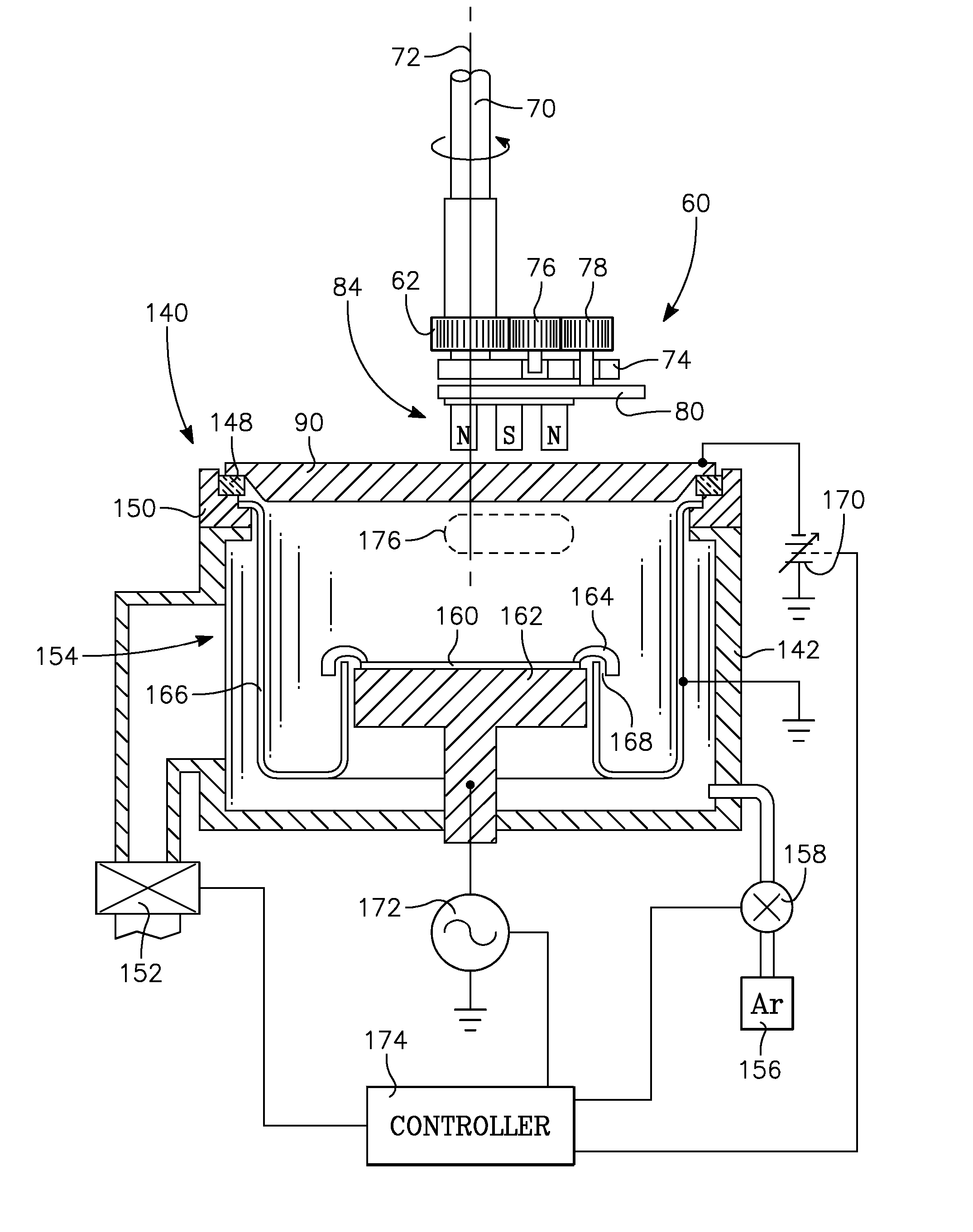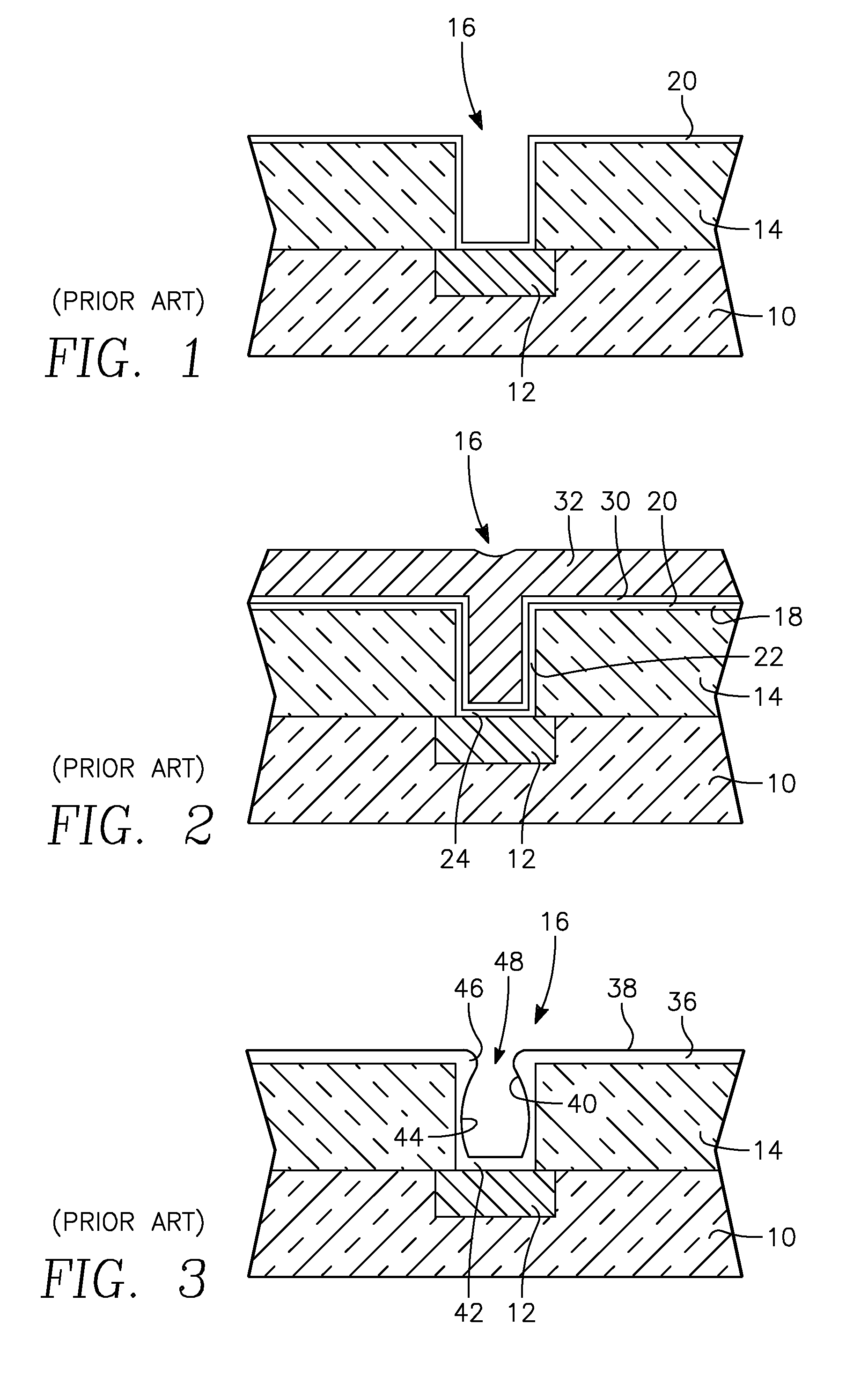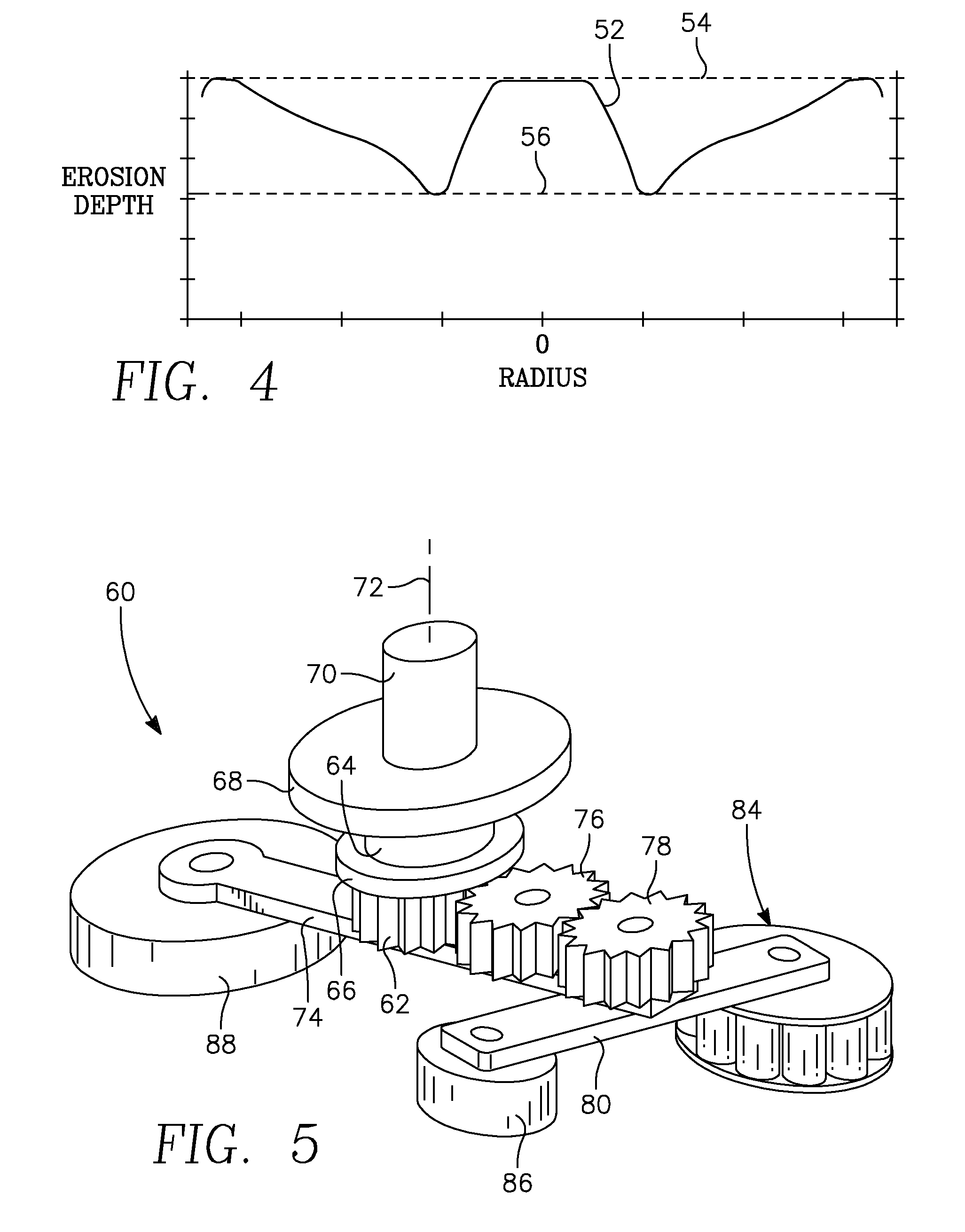Small Scanned Magentron
a magentron and small technology, applied in the field of materials sputtering, can solve the problems of high temperature operation with possible damage, severely affect the performance and reliability of the resulting device, and the sputtering is not inherently adapted to sidewall coverage, etc., to achieve complete target utilization, increase plasma density, and increase the effect of uniformity of sputtering
- Summary
- Abstract
- Description
- Claims
- Application Information
AI Technical Summary
Benefits of technology
Problems solved by technology
Method used
Image
Examples
Embodiment Construction
[0045] One principal embodiment of the invention relies upon a planetary mechanism, for instance, one using a planetary gear system, to allow a small circularly symmetric magnetron to fully cover the sputtering target. The planetary mechanism produces a planetary motion similar to that of a planet orbiting the sun while it is simultaneously executing planetary rotation about its own polar axis. For use with a magnetron, the planetary axis is parallel to but displaced from the orbital axis and the orbit is circular about the orbital axis. The magnet assembly of the magnetron is displaced from and rotates about the planetary axis while the planetary axis orbits or rotates about the orbital axis, thereby producing a complex trajectory for the magnetron. In retrograde planetary motion, the direction of planetary rotation is the reverse to the direction of orbital rotation.
[0046] In one geared embodiment illustrated in the orthographic view of FIG. 5, a magnetron assembly 60 includes a ...
PUM
| Property | Measurement | Unit |
|---|---|---|
| width | aaaaa | aaaaa |
| sizes | aaaaa | aaaaa |
| sizes | aaaaa | aaaaa |
Abstract
Description
Claims
Application Information
 Login to View More
Login to View More - R&D
- Intellectual Property
- Life Sciences
- Materials
- Tech Scout
- Unparalleled Data Quality
- Higher Quality Content
- 60% Fewer Hallucinations
Browse by: Latest US Patents, China's latest patents, Technical Efficacy Thesaurus, Application Domain, Technology Topic, Popular Technical Reports.
© 2025 PatSnap. All rights reserved.Legal|Privacy policy|Modern Slavery Act Transparency Statement|Sitemap|About US| Contact US: help@patsnap.com



